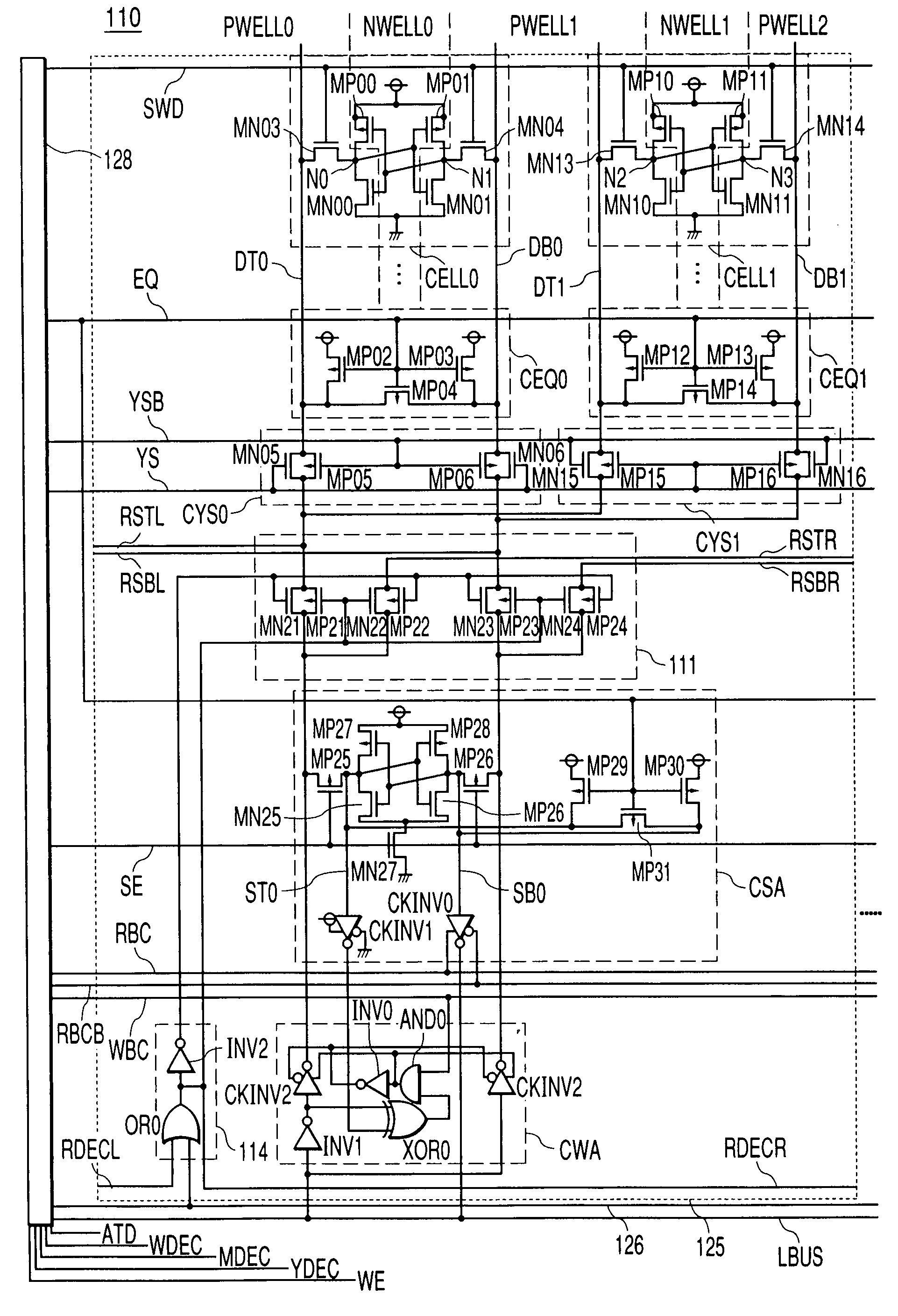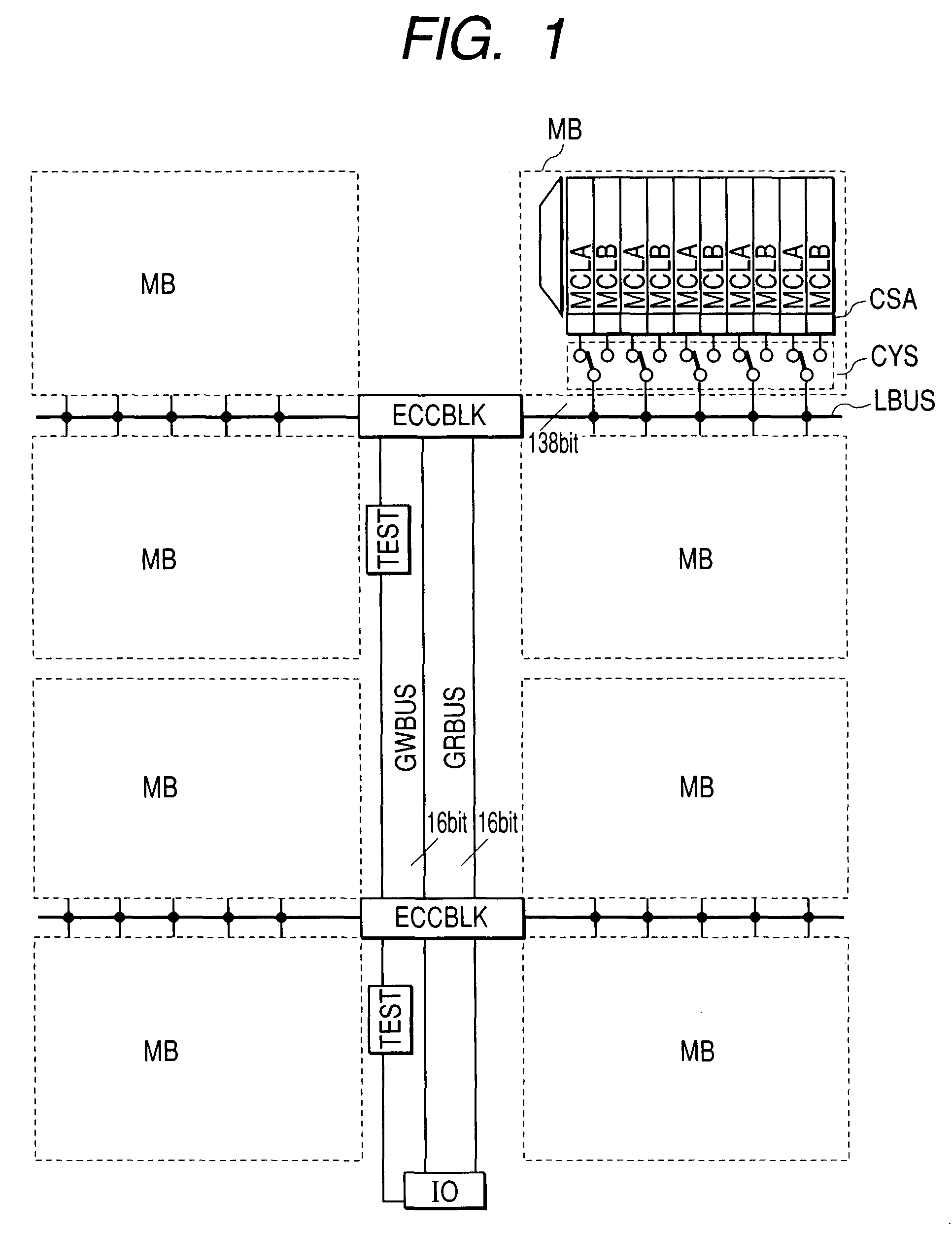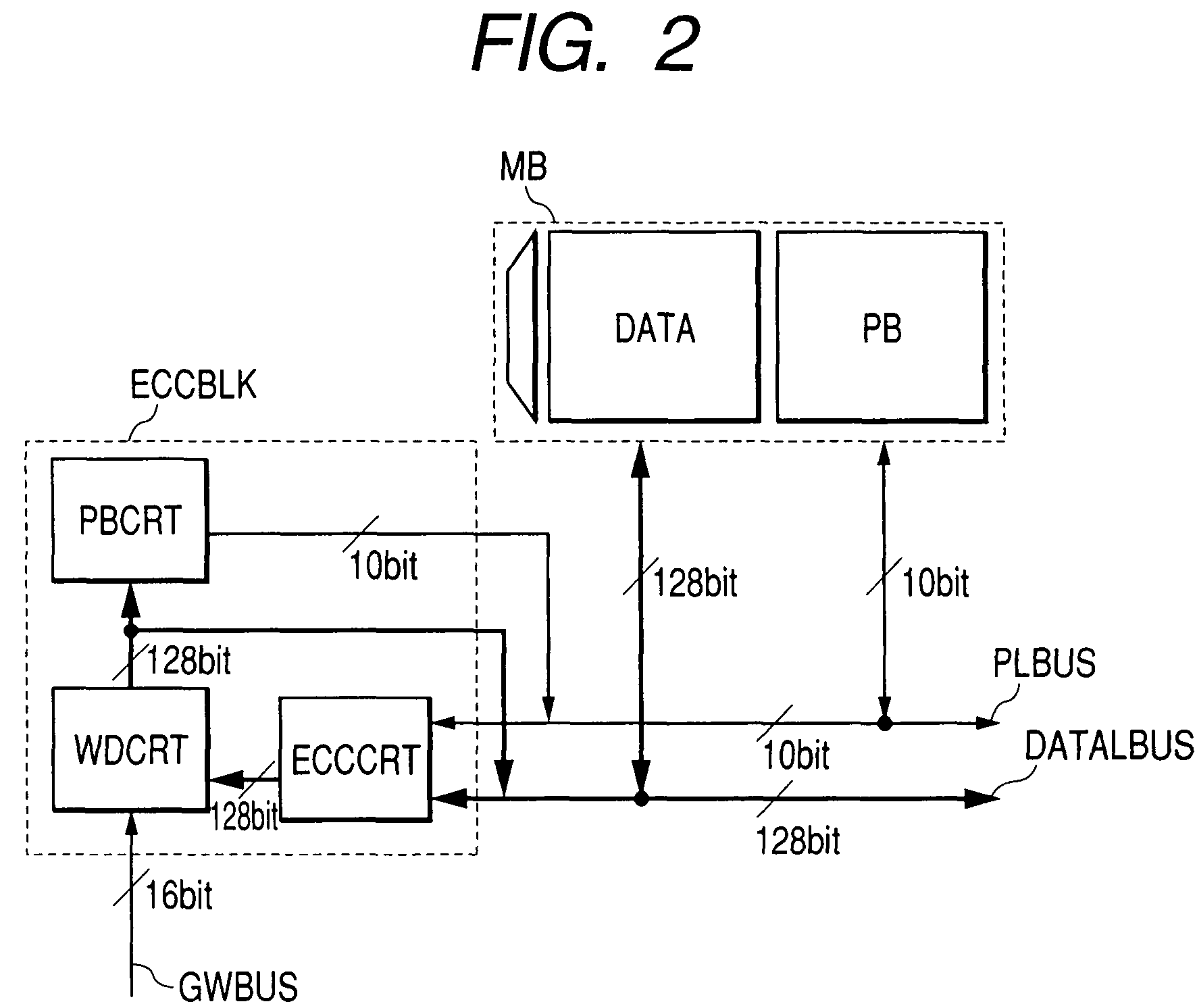Semiconductor memory cells with shared p-type well
a memory cell and p-type technology, applied in the field of sram (static random access memory) and on-chip memory, can solve the problems of deterioration of soft error immunity, cell size, and inability to read, correct, and output data in a single cycl
- Summary
- Abstract
- Description
- Claims
- Application Information
AI Technical Summary
Benefits of technology
Problems solved by technology
Method used
Image
Examples
first exemplary embodiment
[0020]FIG. 1 is a circuit diagram illustrating an example of an application of the present invention to an SRAM. An SRAM memory with an ECC as a semiconductor memory device is divided into a plurality (eight, in this example) of memory blocks. Each block comprises a memory array, a latch type sense amplifier circuit CSA, and a Y switch circuit CYS. The memory array is comprised of memory columns A (MCLA) and memory columns B (MCLB). The memory columns A and B are allocated to different addresses. For example, assuming that there is one parity bit in every 10-bit address and adjacent memory cells on a word line are allocated to an address, if one of the neighboring memory cells, which share the allocated parity bit, has an error, the error cannot be repaired. On the other hand, if adjacent memory cells are allocated to different addresses, each having its own parity bit, then even if one of the adjacent memory cells has an error, the error can be repaired. Since a soft error is likel...
second exemplary embodiment
[0029]FIG. 3 is a circuit diagram illustrating an example of application of the present invention to an SRAM. This semiconductor memory device is formed on a semiconductor substrate made of a material such as single crystal silicon. An SRAM memory with ECC 200, as a semiconductor memory device, is divided into a plurality (32, in this example) of memory mats MAT. Each memory mat (MAT) comprises a circuit 110 as shown in FIG. 4. Eight memory mats comprise a single memory block (BLOCK); there is a local bus LBUS in the center of the block. In this embodiment, the bus width of the local bus LBUS is 138 bits. An error correction block 145 is provided at the point where the local buses (LBUS0, LBUS1) of two blocks (BLOCK0, BLOCK1) intersect.
[0030]Likewise, an error correction block 153 is provided at the point where the local buses (LBUS2, LBUS3) of two blocks (BLOCK2, BLOCK3) intersect. The error correction block 145 and the error correction block 153 are interconnected by a global bus ...
third exemplary embodiment
[0055]The memory mat MAT with a shift type error repair circuit as illustrated by the second exemplary embodiment may be replaced by a circuit 210 with a redundancy circuit for a current defect as shown in FIGS. 7 and 8. FIGS. 7 and 8 make up a diagram with line AA′ as the boundary.
[0056]Referring to FIGS. 7 and 8, the mat circuit 210 will be explained next. The mat (MAT) is comprised of an array block as an arrangement of a plurality of base sets SET, a control circuit 212, and a decoder circuit 213 which specifies a redundancy set.
[0057]A base set SET is comprised of a plurality of units (four units in this embodiment, UNIT0, UNIT1, UNIT2, UNIT3) and a control circuit SETCNT. Each unit is comprised of a plurality of columns of memory cell array (two columns in this embodiment), a circuit 211 for supplying voltage to the memory cell, equalizer precharge circuits (CEQ0, CEQ1), column switches (CRYS0, CRYS1), a sense amplifier CSA, and a write amplifier CWA. Data lines (DT0, DB0) are...
PUM
 Login to View More
Login to View More Abstract
Description
Claims
Application Information
 Login to View More
Login to View More - R&D
- Intellectual Property
- Life Sciences
- Materials
- Tech Scout
- Unparalleled Data Quality
- Higher Quality Content
- 60% Fewer Hallucinations
Browse by: Latest US Patents, China's latest patents, Technical Efficacy Thesaurus, Application Domain, Technology Topic, Popular Technical Reports.
© 2025 PatSnap. All rights reserved.Legal|Privacy policy|Modern Slavery Act Transparency Statement|Sitemap|About US| Contact US: help@patsnap.com



